The World’s Fittest Race Car Drivers
Drivers for Porsche thrive in racing’s toughest competitions thanks to mountain biking, stand-up paddleboarding, and a high-tech training protocol developed by Porsche’s new Human Performance Center powered by Exos
Last August, the stronger riders at the grueling Leadville 100 mountain��bike race found themselves��alongside popular��former Formula 1 race car driver��Mark Webber��as they logged more than 10,000 feet of elevation gain, topping out at 13,185 feet, over the 100-mile course across Colorado’s high country. The 39-year-old Aussie had ended his F1 racing career the year before, and observers could be forgiven if they thought��Webber’s solid finish among the 88th percentile (164th) was him trying out a new sport. But it turns out Webber was using his 8.5-hour Leadville slog as a training ride for his next act: piloting a Porsche in auto��racing’s legendary sufferfest, the FIA World Endurance Championship (WEC) series.
The series is renowned for its signature race, the 24 Hours of Le Mans, held in the Loire Valley of France every June since 1923. Conditions are often hot, humid, and rainy, making it the ultimate test for a race car’s performance and reliability and the driver’s ability to keep his focus. The event follows the same general format as the��handful of other endurance races in the WEC series, like 12 Hours of Sebring and 24 Hours of Daytona: Teams of two or three drivers race flat out for two hours, swap out, and then do it again.��
At Le Mans, the course is held on a combination of closed public roads and a racetrack where tight turns generate up to three��Gs of force and fast straights allow cars to hit speeds in excess of 200 mph. And, oh yeah, they race through the night, fighting against their body’s circadian rhythm, which expects them to be asleep, not weaving through traffic at 150 mph. By the end, most cars have covered more than 3,200 miles, or the equivalent of driving from Los Angeles��to New York City. At an average speed of 135 mph.
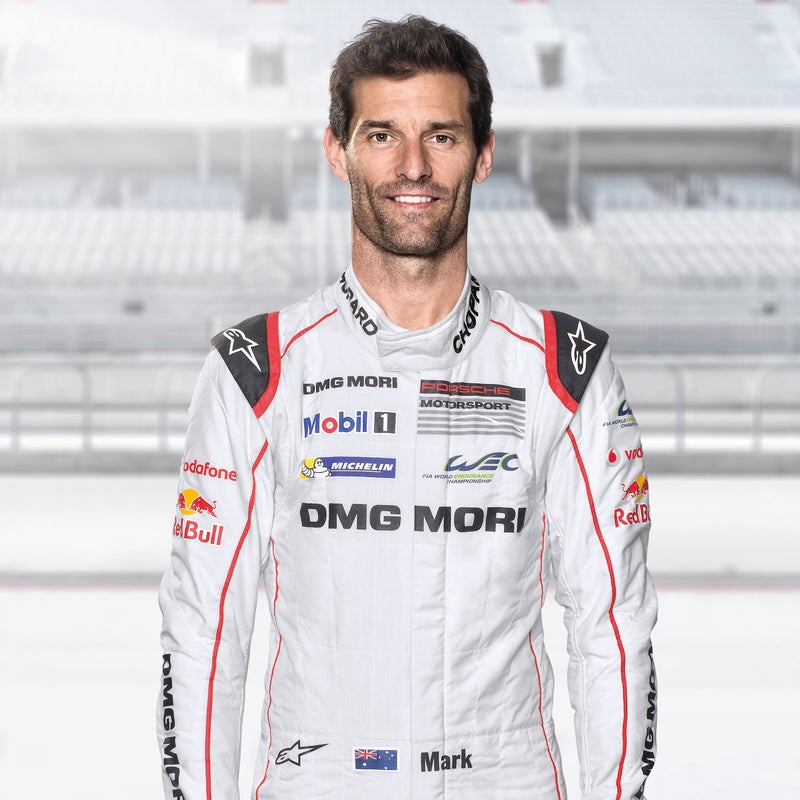
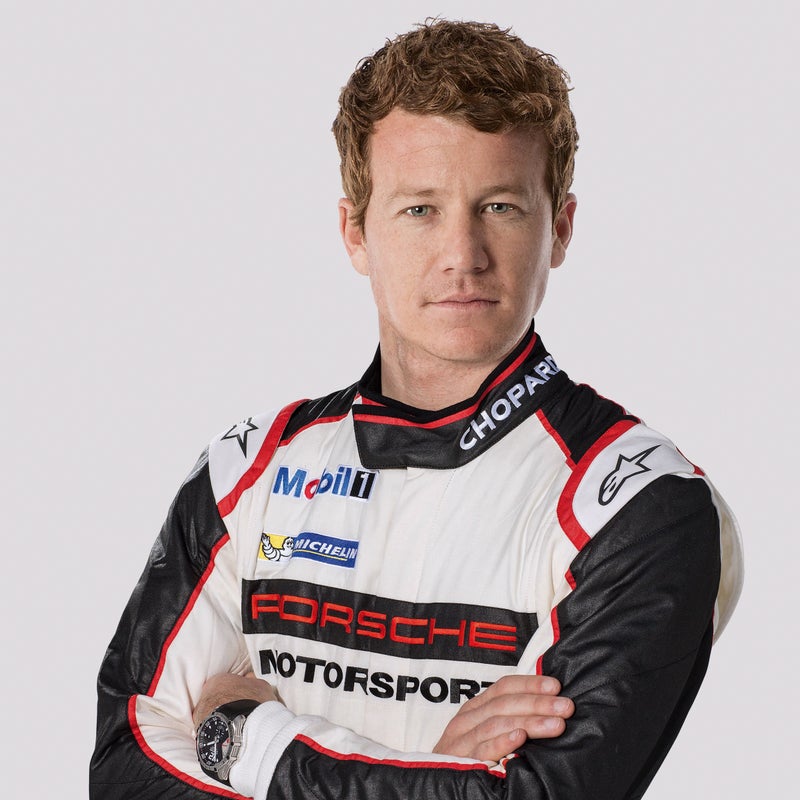
��
��
��
��
��
In short, it takes the same cardiovascular and neuromuscular training required for endurance sports like triathlon and mountain biking, coupled with the dexterity and balance of surfing or trail running, to race for hours at a time and still be at your best at the end. The only thing that differs is how drivers achieve this level of fitness, says Porsche driver Patrick Long, age 34.��“You do what you have to do to be mentally sharp at the start of a race, and all of us are searching for the sport that gets us in shape and helps our focus,” he says. “The mental aspect of driving is the hardest part of the sport. It’s also the hardest to train.”
Long likes to cross-train with multihour stand-up paddleboarding sessions in Marina del Rey, near his Manhattan Beach home in Southern California. It’s relaxing, recalling��the childhood he spent longboard surfing with his father on breaks throughout L.A. and Ventura County.��It also provides him with an intense core��strength and cardio workout while honing his balance and stability. “I can’t just check out��like I could on an exercise bike,” Long says.
Mark Webber, who organized his own adventure race in Tasmania a few years ago, prefers to get his cardio in by hammering laps around whatever racing circuit he’s at. More than just a killer workout, it gives him a chance to scout the course. Semipro Porsche driver and actor Patrick Dempsey, Long’s teammate in this year’s WEC campaign, uses road cycling up the long grades in the Santa Monica Mountains above Malibu, near his home, to build stamina and the high-speed descents on twisting roads to hone his reflexes.
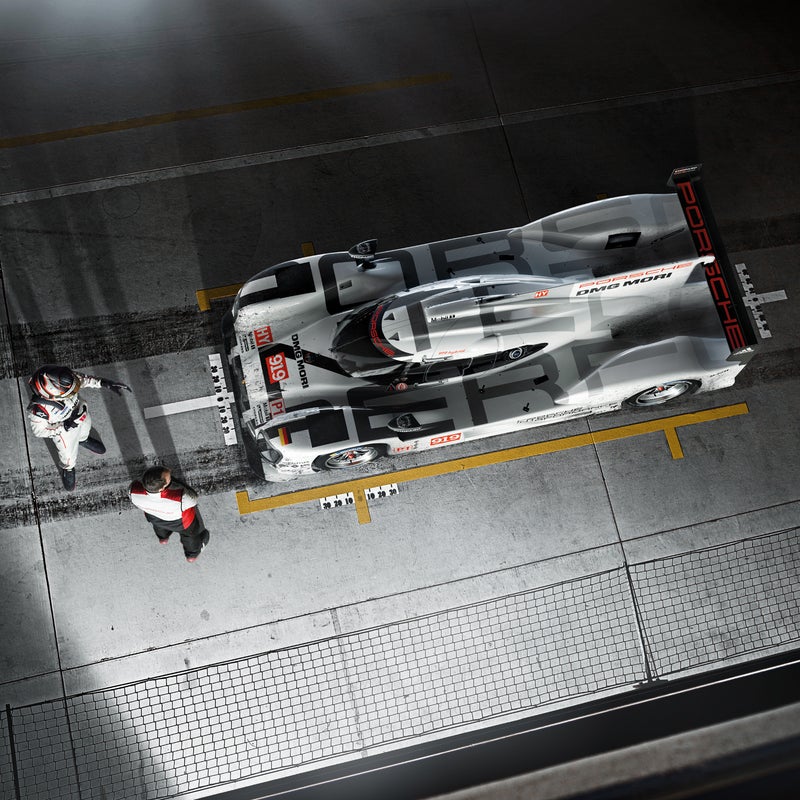
The one common denominator: All drivers hit the gym��with the goal of improving reaction times and building strength and stability—without adding bulk, since muscle mass equals extra weight in the car. The weight training also shores up drivers’ bone density and strengthens their tendons, boosting their chances of escaping injury in the event of an accident.
According to Jefferson Huggins, the Exos��performance specialist at the Porsche Human Performance Center powered by Exos outside Atlanta,��training drivers for a race is no different than what any other athlete does to get in shape for competition. “We make sure they have a solid base of strength and conditioning,” he says. “We build up their workload, then taper their workouts to give their bodies time to recover and grow stronger right before a race.”
Where drivers such as Webber and Long differ is how they measure improvements. It’s not through pounds deadlifted or sustained watts held on an exercise bike, although those are measured. Instead, Porsche uses an electronic reaction board to measure a driver’s agility under physical stress. Shaped like a giant snowflake, the board lights up at random spots within the driver’s field of vision. As soon as he taps a spot, another lights ups.

“The best race car drivers have hand-eye reaction times that are 20 to��30 points higher than average humans,” Huggins says. “We’ll use a session on the board to set a baseline for a driver, and then have them come back after their workout to see how they measure up. For first-time drivers, the board is a wake-up call to the effects of stress and fatigue on their performance. We can show them the data on how much they’ve slowed down. We can also show them how much their reaction times have improved��based upon their improved fitness.”
In addition to keeping reaction times as sharp as possible, drivers must be extremely fit to combat the punishment of repeated G-forces, which wreak��havoc on blood flow, and to endure their other big enemy: heat. Track temperatures often exceed 100 degrees; drivers’ racing suits are stitched from fireproof fabric, not breathable membranes; and the cars don’t come with air conditioning. But the fitter a driver is, the more efficiently their body can act like a radiator and dispel heat through sweat. To help Porsche’s drivers maximize their body’s��ability to cool, the Human Performance Center runs each driver through a heat chamber and runs a sweat check. This breaks down each athlete’s sweat rate and sodium loss. The result is a customized hydration fluid and rehydration schedule that keeps the driver’s neuromuscular system primed throughout a race.
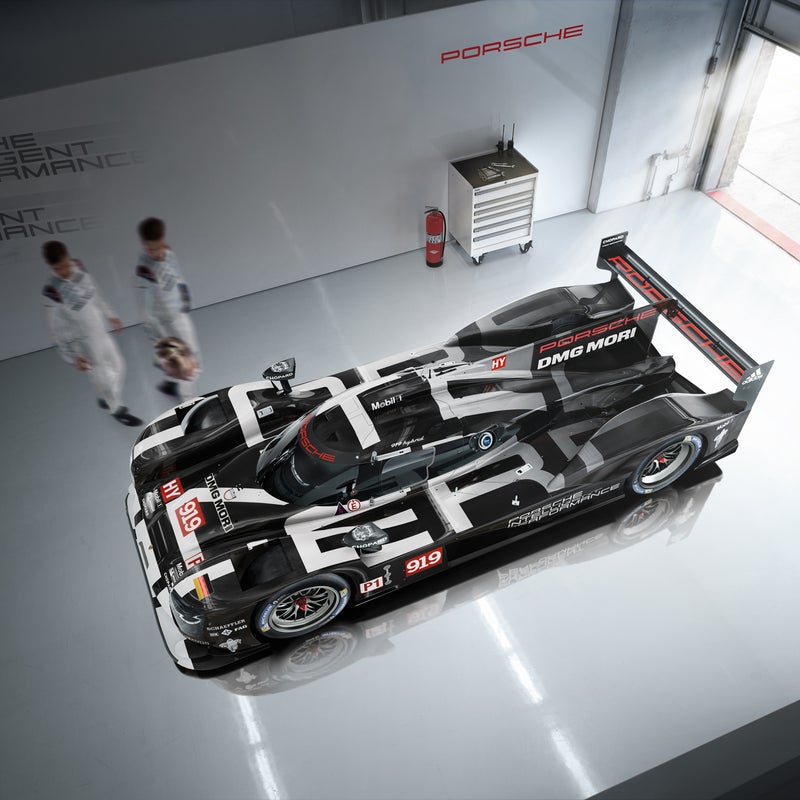
“We’ll have a driver do a reaction board test, put them into a heat chamber for 30 minutes, then have them do the test again,” Huggins says. “They learn pretty quickly the value of staying hydrated as best they can. During a race such as Le Mans, where they swap in and out of the car with their teammates, there’s someone there to make sure they stay hydrated.”
If this��all sounds like the stuff of Olympic-level athletes, that’s because it is. Porsche sees its drivers as an integral part of maintaining its stature as the most successful team in endurance racing history.��By the time race day comes, the drivers will be as well tuned as the cars to deliver their strongest performance. “In the abstract, driving a race car isn’t hard,” says Dean Golich, a trainer with Carmichael Training Systems who’s tested Webber (“He could probably be a pro triathlete if he wanted to”) and worked with drivers across different classes. “But driving at 200 mph,��avoiding traffic,��when its 120 degrees inside the car,��for four-plus hours—it’s a legit endurance sport. If you want to get a sense for what these guys endure, go into a sauna with a large nut and bolt and then screw and unscrew them together by hand four��times every 20 seconds��for four hours. Good luck.”
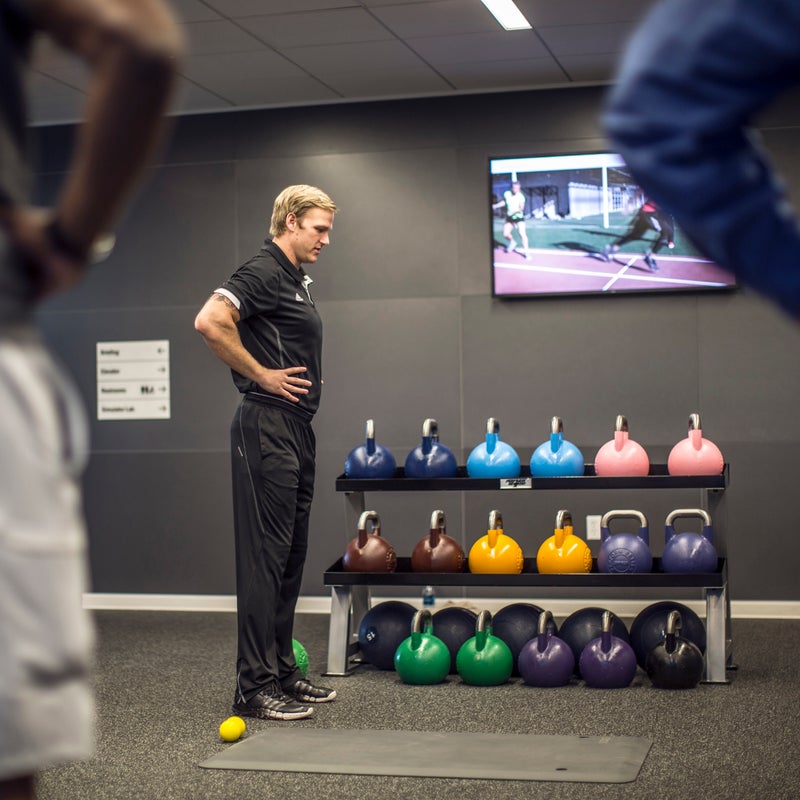
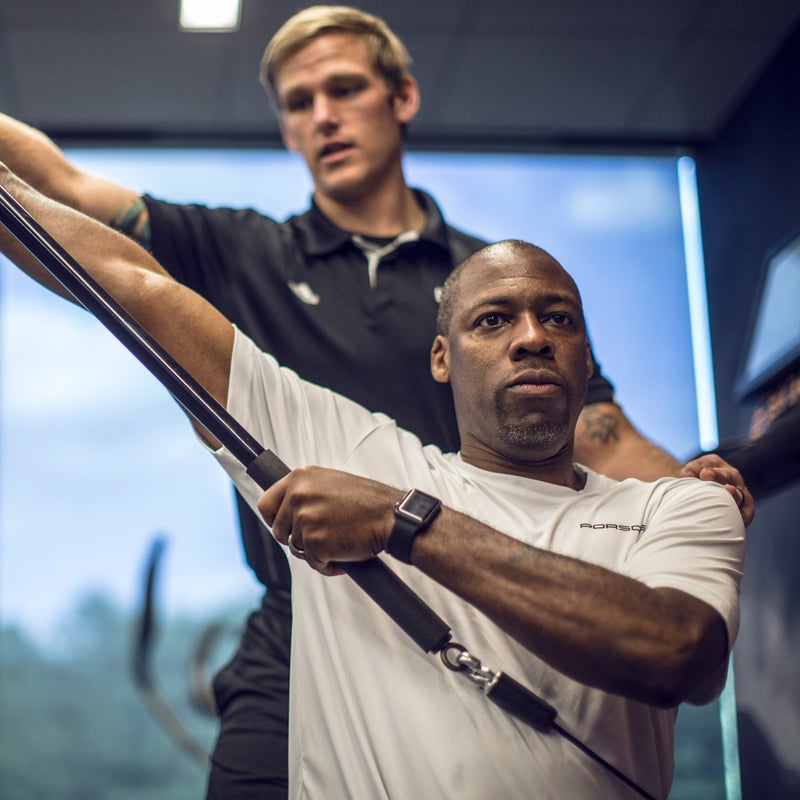
��
��
��
��
��
��
��
The Porsche-Endorsed Workout
These racing-specific core and stability exercises are tailor-made for endurance race car driving, but they’ll up your game in any sport.1.��Bottoms-Up Kettlebell Arm Bar
Works:��Shoulder stability and grip
Start with a light kettlebell in your right hand. Lie on the floor, knees bent, feet flat on the floor, left arm flat on the ground for support. Raise the kettlebell up over your torso until your right arm is straight and vertical while keeping the bottom of the kettlebell pointed toward the ceiling. Work up to holding it steady for one��minute. Repeat with left arm.
Good for: climbing, surfing, kayaking��2. Neck Pulls
Works:��Core stability and neck strength
Sit upright on a stability ball while maintaining a neutral spine and a big chest. Wrap an elastic Theraband therapy band around your head. Pull the band forward for 15 seconds with your hands while keeping your neck straight. Repeat, this time pulling the band to your left, then back, then to the right, completing a full range of motion.
Good for:��Mountain biking, trail running3. Shoulder Pulls
Works:��Core and shoulder stability
While standing tall, balance on one leg with your opposite knee bent to 90 degrees. Grab the��ends of an elastic Theraband therapy band in each hand.��Hold your arms straight out in front of you, and pull your arms away from each other for 15 to��20 reps, switching legs every 5 to 10 reps. Hold your arms overhead and repeat. Then grab the band behind your back with both hands at waist level and repeat.
Good for:��Climbing, mountain-biking, swimming4. One-Legged Toe Touches
Works: Back and overall stability
Stand on your right leg. Slowly bend at the waist and lower your torso while you raise your left leg behind you to counterbalance your upper body. Focus on keeping a straight line from your head to the heel of your counterbalancing foot.��With your left hand, reach down to touch the toes on your right foot. Slowly raise yourself upright. Repeat, standing on your left leg and reaching with your right hand.
Good for:��Skiing, snowboarding, surfing, climbing, trail��running

